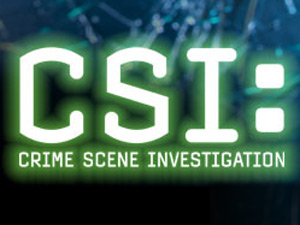Everyone has either heard of or watched a t.v show called CSI: Crime Scene Investigation. This show is about mystery, murder and crime with a series of plot twists. Now, how does this relate to AP Biology?

#CSINDB was a project, immediately after the fetal pig dissection, in which my AP Biology class was split into three different groups. Each group was given a particular body system (digestive, endocrine, respiratory, immune, etc) and each group was told to come up with a story line a scenario where the pig dies, or is killed in relation to the body system. The head group gives the rest of the class hints and tests in order for them to guess the body system under 50 minutes. My group was given the endocrine system, which is a series of glands that excrete hormones into the circulatory system. (Check out the thinglink my group created here). Our scenario went as follows:
Wilbur, the pig, was a public figure with a wife and kids, putting on the facade of a perfect life. Wilbur was also a diabetic and had a variety of other health issues. *The class conducted a blood test and found that he was a sickle cell carrier.*
Wilbur’s political life drew a lot of enemies. His main opponent, Natasha, was a tiger. She admitted to not being fond of Wilbur and was known to do anything to win. *The class began to suspect her to be the main suspect.*
Wilbur’s house was closed off as investigators rummaged for clues. *The class rummaged through his trash can and found a ripped picture of Wilbur and his wife, as well as a wedding ring.* These clues led the class to believe that Wilbur and his wife had marital problems so Wilbur’s wife was questioned.
Wilbur’s wife was questioned and revealed that she was the one administering his insulin injections. *The class went to the back of the classroom to conduct a urinalysis test which determined there was a buildup of sugar in his urine.*
The buildup of sugar was shocking to the coroner, the class and the investigators. What could cause this? When food is ingested, insulin is secreted into the bloodstream. The insulin travels to the liver or muscles, where it attaches to receptors on the surface of the cells like lock and key. In non-diabetic people, this process allows individual glucose molecules to enter the cells of muscles, liver, and other organs. However, the cells of people with insulin resistance are “turned off” so much of the glucose cannot enter the cells. A buildup of sugar occurs in the body and this can be deadly to the person’s body.
Investigators went through Wilbur’s phone to find love messages between Wilbur and his political opponent, Natasha. They were supposedly in love and Wilbur was going to leave his wife for her. *The class wanted to call Wilbur’s wife back to questioning.*
During her interview, Wilbur’s wife sneezed. She admitted to taking Cortisol for her severe allergic reactions. *The class found that there was a buildup of cortisol in the blood stream.* Cortisol inhibits insulin from removing glucose in the blood. Cortisol is also commonly taken for severe allergies. *At this moment the class and investigators convicted Wilbur’s wife to murder and the case was solved.*
As part of the project, the rest of the class was supposed to guess what body system was involved. They immediately guessed the endocrine system when the case was solved. The endocrine system is directly affected by diabetes and the excretion of insulin and the inhibition by Cortisol.
Check out my group’s infographic about Diabetes:




 Fortunately, my AP Biology class was able to partake in this experience on April 22, 2014. My class collected data on different species of animals as well as how the tide affects the different zones.
Fortunately, my AP Biology class was able to partake in this experience on April 22, 2014. My class collected data on different species of animals as well as how the tide affects the different zones.






 ally interested me. As Jennifer stated, “Me and my partners screamed of happiness because we thought we were not going to be able to do the project.” The joy we felt lifting the DNA up was that of no other. We felt smart and capable of doing such an intricate experiment. Bharathi states that the experiment could have been improved if we “placed the DNA under a microscope.”
ally interested me. As Jennifer stated, “Me and my partners screamed of happiness because we thought we were not going to be able to do the project.” The joy we felt lifting the DNA up was that of no other. We felt smart and capable of doing such an intricate experiment. Bharathi states that the experiment could have been improved if we “placed the DNA under a microscope.”



